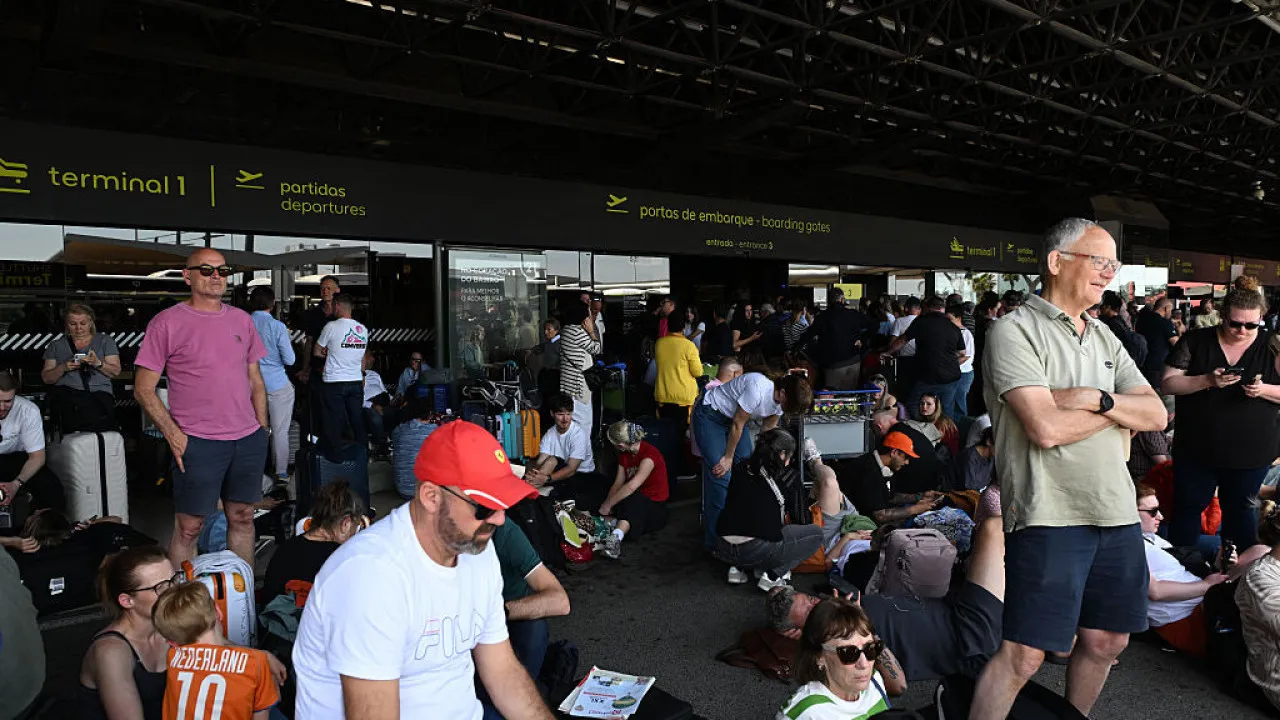The citizens’ initiative aims to unite all European capitals around high-speed trains. Signature gathering began on May 30, with the aim of reaching one million signatures. The aim is to reduce the carbon footprint of travelers in the EU.
Signature gathering began on May 30 for the 100th citizens’ petition approved by the European Commission, an initiative which can be viewed here and which aims to create a network of high-speed trains between all the capitals of the European Union, including cities which currently have no access, such as Lisbon. In their justification, the organizers call for “a binding legal act” and highlight the advantages of high-speed trains, which enable them to replace more polluting medium-distance air travel. In addition to being “sustainable and safe”, high-speed rail contributes to “evenly distributed economic growth across the EU”, write the petition’s authors.
This citizens’ initiative will have one year to collect one million signatures in seven EU member states, a high threshold which, if exceeded, will oblige the European Commission to take a position on the issue.
The idea of extending the high-speed rail network was the 100th petition registered by the European institutions under rules adopted in the Lisbon Treaty and which were revised in 2019, making such citizen actions more transparent and less bureaucratic.
So far, only the admission phase has been completed. The hardest part remains: gathering at least one million signatures, which only 9 of the 100 registered petitions have managed to do so far. The European Commission has already taken decisions on seven of them, mainly in the fields of the environment, agriculture and animal rights, and two others are nearing completion.
Even if the proposals pass the million-signature mark, Brussels is under no legal obligation to adopt them, but an explanation of the final decision is required. Three conditions must be met for a citizens’ petition to be registered and start collecting signatures: it must not be frivolous, it must be in line with the Union’s values, and it must concern a subject on which the Commission can legislate.
In the case of the extension of the high-speed rail network, the idea will be costly, even if everything indicates that it does not run counter to Brussels’ intentions. It’s also a popular idea. Portugal, for example, has very poor rail links with other countries. It takes forever to travel between Lisbon and Madrid, and there is money available to finance crossings between countries.
A route to which Portugal still aspires
The European Union has great ambitions for high-speed trains (TGV), which have been developing in Central Europe since the 1970s. These trains have cut rail journey times by half in various regions, with advantages in major countries such as France, Germany, Spain and Italy. By making medium-haul journeys more accessible, rail networks can reduce the impact of commercial aviation, which is much more polluting.
A train is considered a high-speed train if it can reach 250 kilometers per hour and, in the most technologically advanced systems, 350 kilometers per hour. With these criteria, the EU network would reach a total of 11,700 kilometers by 2020.
The European Commission aims not only to increase the length, but also to double passenger traffic by 2030 and, over the following two decades, to triple current passenger numbers. Brussels has focused on policies to optimize cross-border management and planning. The aim is to strengthen a common European railway area, with regulation and cooperation between countries, while maintaining competition between companies, as has happened in the aviation sector.
High-speed trains are considered essential in the 2021 European mobility strategy. Creating a coherent network will take years, but it promises to make the transport sector more environmentally sustainable by reducing European greenhouse gas emissions. In short, the citizens’ initiative to link the network to all capital cities is in line with Brussels’ mobility objectives.
Portugal remains a peripheral country in these ambitions. The first high-speed link should be ready next year, connecting Lisbon to Madrid, albeit with speed restrictions on several sections of the route. The journey between the two capitals should be cut to 5 hours and 30 minutes, half the current time. The government is also planning a faster link between Lisbon and Porto, to be built in several phases at a cost of almost 3 billion euros. When the first phase is completed in 2028, the journey should take two hours. By 2030, this time could be reduced to 1 hour and 20 minutes. Phase 3, which will not be completed until 2030, will reduce this time by a further five minutes.
Spanish CAF promises factory in Portugal if it sells trains to CP








